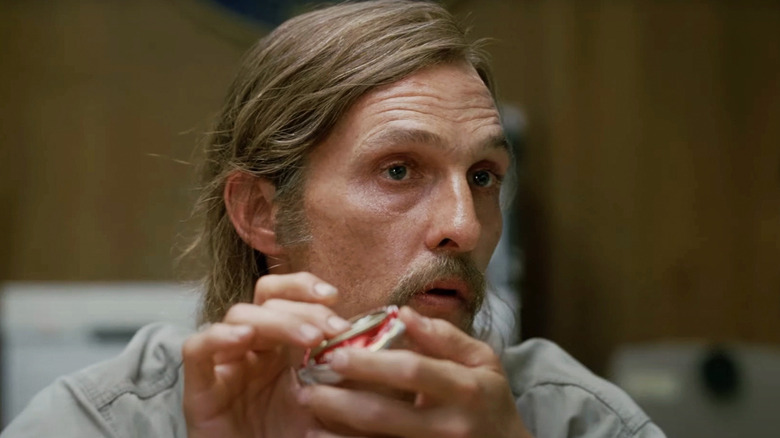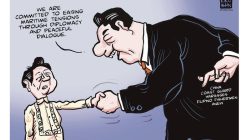The Origin and Meaning of “Time Is a Flat Circle” in True Detective
Few television series have captured the imagination of audiences like True Detective season 1. Created by Nic Pizzolatto, directed by Cary Joji Fukunaga, and starring Matthew McConaughey and Woody Harrelson, the show is widely regarded as one of the greatest ever made. Beyond its compelling narrative and stellar performances, one of the most memorable elements from the first season is the phrase “time is a flat circle.” This line has become deeply embedded in pop culture, often used in memes and casual conversations. But what does it really mean?
The phrase originated from a philosophical concept, specifically Friedrich Nietzsche’s idea of eternal recurrence. In his work The Gay Science, Nietzsche presents a thought experiment where an individual is told that they must live their life over and over again, with no changes. This concept challenges individuals to reflect on whether they would find such an existence unbearable or meaningful.
In True Detective season 1, the phrase is first spoken by Reggie Ledoux (Charles Halford), a meth dealer and child abuser who is killed by Marty Hart (Woody Harrelson) in a flashback episode. As he faces death, Reggie says, “I know what happens next. You’ll do this again. Time is a flat circle.” This moment introduces the theme of cyclical time and the inevitability of repetition, which becomes central to the show’s narrative.
Rust Cohle (Matthew McConaughey), the enigmatic detective, later reflects on this idea during a philosophical monologue. He expresses a sense of despair, believing that no matter how hard he tries, certain events will repeat themselves. He sees the world as a place where nothing is truly solved, and where suffering is endless. However, the show doesn’t end on a bleak note. At the very end of season 1, Rust gazes at a star-filled sky and says, “Once there was only dark. If you ask me, the light’s winning.” This line suggests a more hopeful interpretation of the concept, implying that even in a world of repeating cycles, there is beauty and meaning to be found.
The Spiral Symbol and Its Significance
Another key element that reinforces the theme of “time is a flat circle” is the recurring spiral symbol. This motif appears throughout the season, most notably on the back of murder victim Dora Lange in the pilot episode. The spiral represents the cyclical nature of time and fate, echoing the idea that events are destined to repeat.
The spiral makes a return in True Detective: Night Country, where it is linked to an ancient beast seen in the Alaskan tundra. This visual representation adds another layer to the show’s exploration of time and destiny, suggesting that some forces are beyond human control.
Throughout season 1, Rust experiences visions that include the spiral, further emphasizing the connection between his hallucinations and the concept of eternal recurrence. These visions serve as a reminder that time may not be linear, but rather a continuous loop.
Quantum Physics and the Concept of Time
In addition to its philosophical roots, True Detective also incorporates elements of quantum physics to explain the idea of “time is a flat circle.” Rust provides a scientific explanation during a scene where he flattens a beer can to illustrate his point. He describes time as a four-dimensional structure, where from an external perspective, all moments exist simultaneously. In this view, time is not a straight line but a flat circle, with every event already laid out.
This idea aligns with the quantum theory of superposition, where particles can exist in multiple states at once. Rust’s interpretation suggests that time, when viewed from a higher dimension, is not bound by the constraints of linear progression. Instead, it exists as a single, unified whole, where past, present, and future coexist.
Nic Pizzolatto, the show’s creator, has acknowledged that these ideas were included because they fit the character of Rust. He explained that the concept of time being a flat circle was not just a philosophical exercise, but a way to explore the character’s worldview and the themes of the show.
The Show Itself as a Flat Circle
Interestingly, True Detective season 1 operates as a literal example of the “flat circle” concept. The narrative jumps between three different time periods—1995, 2002, and 2012—creating a non-linear structure. Viewers can watch the season multiple times, experiencing the same events in different orders. This meta-narrative reinforces the idea that time is not fixed, but rather something that can be revisited and reinterpreted.
Pizzolatto himself has noted that the show functions as a flattened version of time, with characters living their lives in a linear fashion while viewers experience them in a non-linear way. This duality highlights the theme of cyclical existence, where the past and future are not separate, but part of a continuous whole.
Conclusion
The phrase “time is a flat circle” has become more than just a catchphrase—it is a powerful exploration of time, fate, and human existence. From its philosophical origins in Nietzsche’s work to its scientific interpretations and symbolic representations, the concept resonates deeply with audiences. True Detective season 1 not only uses this idea to shape its narrative but also embodies it through its structure and themes.
Whether viewed as a warning, a reflection, or a source of hope, the concept of “time is a flat circle” continues to captivate and inspire. For many, the show itself serves as a testament to the enduring power of storytelling and the timeless nature of human experience.







